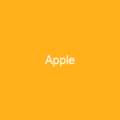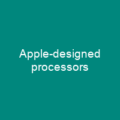What Exactly is a Podcast?
A podcast is like a digital treasure chest of audio content that you can download or stream at your convenience. Imagine it as a magical portal to endless stories, discussions, and insights—available right in the palm of your hand. It’s not just about listening; it’s an experience that allows you to explore topics from the comfort of your own space.
Podcasts: More Than Just Audio
While podcasts are primarily audio, some adventurous creators have ventured into video territory too. Think of them as a hybrid between radio and television, but with a twist—complete freedom to explore any topic under the sun. From deep dives into scientific research to heartwarming slice-of-life stories, there’s something for everyone.
Cost-Effective and Accessible
The best part? Podcasts are usually free to download or stream. It’s like getting a library card without the annual fee! This makes it incredibly accessible for people of all backgrounds to engage with diverse content, fostering a sense of community around shared interests.
How Does Podcasting Work?
Podcasting is like a digital magic show that combines artistic sound production with thematic concerns. It’s not just about recording; it’s about creating an engaging experience for your audience. Think of it as crafting a narrative that resonates, whether it’s through scientific exploration or personal storytelling.
The Technical Side
Podcasting involves preparing and distributing audio or video files using RSS feeds to subscribed users’ devices. It’s like setting up a digital beacon that guides listeners to the latest content. A podcaster typically buys the service from a podcast hosting company, which takes care of the technical backend so you can focus on creating quality content.
History and Evolution
The term ‘podcast’ is a portmanteau of ‘iPod’ and ‘broadcast.’ It was first used in early February 2004 by Ben Hammersley. The concept of attaching sound files to RSS feeds was proposed in October 2000 by Tristan Louis, who implemented it later with Dave Winer. This innovation paved the way for what we now know as podcasts.
Early Pioneers
In September 2000, i2Go offered a service called MyAudio2Go.com, which allowed users to download news stories for listening on a PC or MP3 player. Adam Curry launched his show Daily Source Code in August 2004, inspiring others to create their own projects. These early pioneers laid the groundwork for what would become a global phenomenon.
Apple’s Role
In June 2005, Apple released iTunes 4.9, adding formal support for podcasts and effectively ending podcatcher development. This move by Apple was pivotal in popularizing podcasts, as it made them more accessible to a wider audience.
Popularity and Growth
By 2007, audio podcasts were equivalent to radio broadcasts in popularity. The podcasting industry still generated little revenue by early 2019, but listener numbers continued to grow. Today, there are over 3 million podcasts with more than 199 million episodes, making it a bustling ecosystem of content.
Global Reach
As of 2020, South Korea and Spain had high rates of podcast listenership, while the UK and US populations listened less frequently. This global reach highlights how podcasts have become an integral part of digital culture worldwide.
Legal Battles and Trademarks
The term ‘podcast’ has faced some legal battles over its usage. Shae Spencer Management filed a trademark application in 2005, which was rejected due to Wikipedia’s description. Apple began cracking down on businesses using the term ‘POD’ in product names. These legal skirmishes underscored the importance of clear definitions and usage guidelines.
Monetization
Making money from podcasts can be challenging, but there are options like ad time purchases and crowdfunding websites like Patreon. Monetizing a podcast requires creativity and strategic planning to build an engaged audience that values your content enough to support you financially.
Types of Podcasts
Podcasts vary widely in style, format, and topical content. Enhanced podcasts combine audio with visual elements like slideshows, while fiction podcasts deliver stories through multiple voice actors, dialogue, sound effects, and music. These diverse formats cater to different tastes and preferences.
Live Podcasts
Live podcasts are recorded in front of a live audience, offering additional revenue opportunities through ticket sales. This format adds an element of excitement and interactivity that can enhance the overall listening experience.
Equipment and Tools
To start your own podcast, you need basic equipment like a computer, microphone, and headphones. Optional tools include USB audio interfaces, webcams, and lighting for video podcasts. With these essentials, you can create high-quality content that resonates with your audience.
Conclusion
Podcasting is more than just a medium; it’s a powerful tool for storytelling and community building. Whether you’re an aspiring podcaster or simply someone who enjoys the magic of these digital treasures, there’s no denying that podcasts have transformed how we consume and share information.

You want to know more about Podcast?
This page is based on the article Podcast published in Wikipedia (retrieved on February 24, 2025) and was automatically summarized using artificial intelligence.






